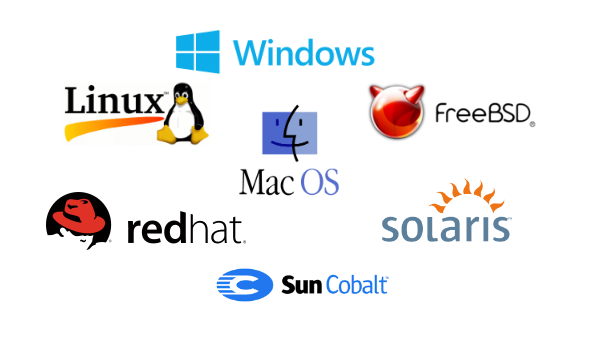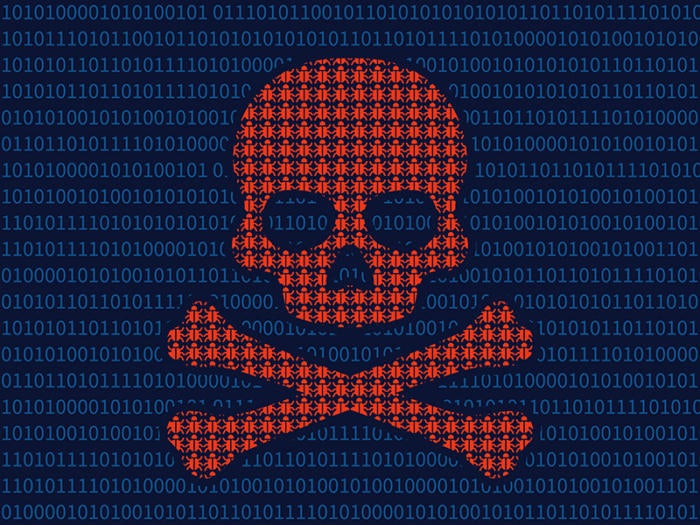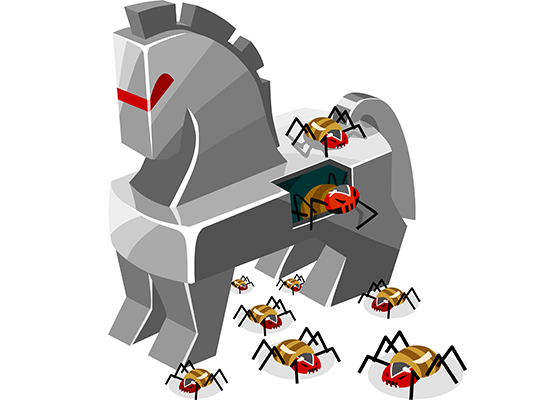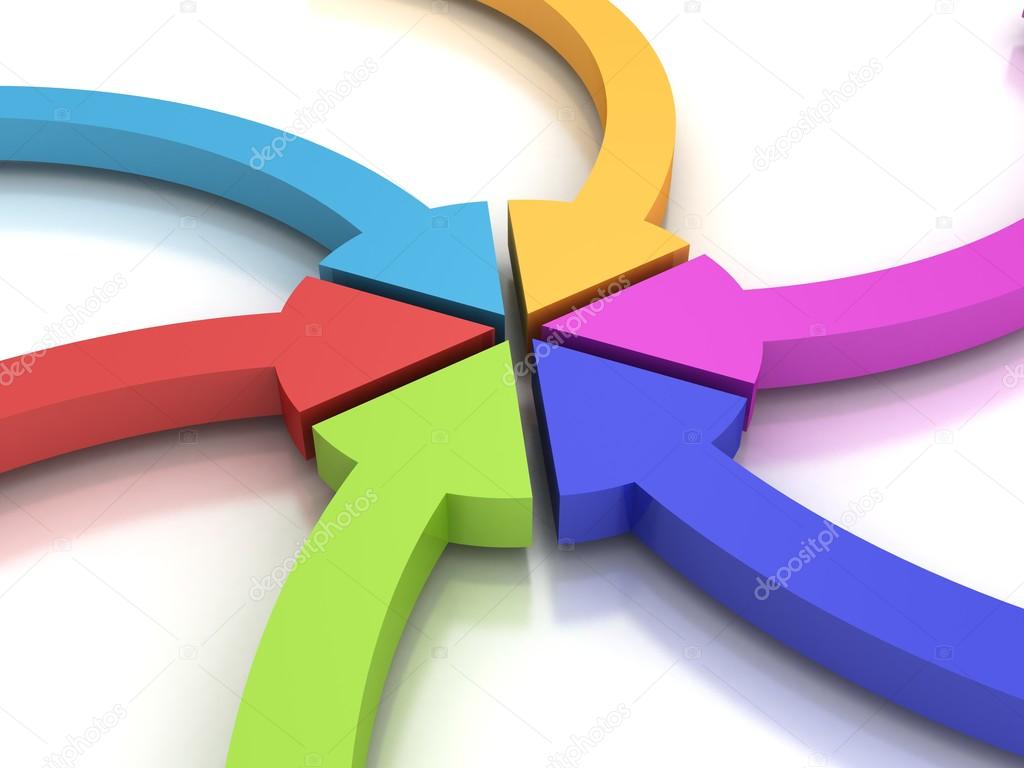Rules of Netiquette
THE INTERNET
Operating system (OS)

The other programs are called applications or application programs. The application programs make use of the operating system by making request for services through a defined application program interface
In addition, through a user interface such as a command line or a graphical user interface (GUI).
SOFTWARE
Internet/web threats

 - A crime committed or assisted through the use of internet.
- A crime committed or assisted through the use of internet.
Most cybercrimes are committed by individuals or small groups. However, large organized crime groups also take advantage of the Internet. These "professional" criminals find new ways to commit old crimes, treating cybercrime like a business and forming global criminal communities.
- Malware short for malicious malware, is an umbrella term use to refer to a variety forms of hostile or intrusive software.

 Spyware is a type of malware that is installed on a computer without the knowledge of the owner in order to collect the owner’s private information. Spyware is often hidden from the user in order to gather information about internet interaction, keystrokes (also known as key logging), passwords, and other valuable data.
Spyware is a type of malware that is installed on a computer without the knowledge of the owner in order to collect the owner’s private information. Spyware is often hidden from the user in order to gather information about internet interaction, keystrokes (also known as key logging), passwords, and other valuable data.
 Electronic spamming is the use of electronic messaging systems to send an unsolicited message (spam) especially advertising, as well as sending messages repeatedly on the same site.
Electronic spamming is the use of electronic messaging systems to send an unsolicited message (spam) especially advertising, as well as sending messages repeatedly on the same site.
Phishing
 Is the attempt to obtain sensitive information such as usernames, passwords, and credit card details (and money), often for malicious reasons, buy disguising as a trustworthy entity in a electronic communication.
Is the attempt to obtain sensitive information such as usernames, passwords, and credit card details (and money), often for malicious reasons, buy disguising as a trustworthy entity in a electronic communication.

 These
are sites that allows users to post their own news items or links to other news
sources. The users can also comment on the post and comments may also be rated.
These
are sites that allows users to post their own news items or links to other news
sources. The users can also comment on the post and comments may also be rated.
5. Microblogging
 These
websites allows the user to post their contents. Other user able to comment on
the said topic.
These
websites allows the user to post their contents. Other user able to comment on
the said topic.
The internet, sometimes called simply ‘the Net’ is a worldwide system of computer networks –a network of networks in which users at any one computer can, if they have permission get from any other computer (and sometimes directly to users at other computers)
A global computer network providing a variety of information and communication facilities, consisting of interconnected networks using standardized communication protocols.
Operating system (OS)
An operating system or (OS) is the program that, after being initially loaded into the computer by a boot program manages at the other program of the computer.

The other programs are called applications or application programs. The application programs make use of the operating system by making request for services through a defined application program interface
(API).
In addition, through a user interface such as a command line or a graphical user interface (GUI).
SOFTWARE
Computer software Is a part of computer system that consists of data or computer instructions, in contrast to the physical hardware from which the system is built.
Computer software includes computer program, libraries and related non-executable data such as online documentation or digital media. Computer hardware and software required each other and neither can be realistically used on its own.
Computer software, or simply software, is a collection of data or computer instructions that tell the computer how to work. This is in contrast to physical hardware, from which the system is built and actually performs the work.
Internet/web threats
A web threat is any threat that uses the world wide web to facilitate cyber crime. Web threats use multiple types of malware and fraud, all of each utilize HTTP or HTTPS protocols but may also employ other protocols and components, such as links in email or IM or malware attachments or on servers that access the web.
Web threats pose a broad range of risks, including financial damage, identity theft, loss of confidential information/data, theft of network resources, damaged brand/personal reputation and erosion of consumer confidence in e-commerce and online banking.
CYBERCRIME
 - A crime committed or assisted through the use of internet.
- A crime committed or assisted through the use of internet.Most cybercrimes are committed by individuals or small groups. However, large organized crime groups also take advantage of the Internet. These "professional" criminals find new ways to commit old crimes, treating cybercrime like a business and forming global criminal communities.
As Dr. Michael McGuire said, cyber crime has evolved into an entire economy rife with professionalization and filled with parallels to legitimate industries. “The emergence of a complex and multi-layered cyber crime economy has also begun to suggest a fundamental shift in the very nature of crime itself. In this context, overt acts of crime become less central features of the criminal ecosystem when compared to the services and platforms that feed off and support crime – which become increasingly low-investment, high-yield and low-risk operations.”
MALWARE
- Malware short for malicious malware, is an umbrella term use to refer to a variety forms of hostile or intrusive software.
Kinds of MALWARE
1. Computer Virus

A computer virus is a type of malicious software program(malware) that, when executed, replicates itself by modifying other computer and inserting its own code. Infected computers programs can include as well data files or the ‘boot’ sector of the hard drive.
"ILOVEYOU" Computer Virus
ILOVEYOU, sometimes referred to as Love Bug or Love Letter, was a computer worm that attacked tens of millions of Windows personal computers on and after 5 May 2000, local time in the Philippines when it started spreading as an email message with the subject line "ILOVEYOU" and the attachment "LOVE-LETTER-FOR-YOU.txt.vbs". The latter file extension ('vbs', a type of interpreted file) was most often hidden by default on Windows computers of the time (as it is an extension for a file type that is known by Windows), leading unwitting users to think it was a normal text file.
Opening the attachment activated the Visual Basic script. The worm did damage on the local machine, overwriting random types of files (including Office files, image files, and audio files; however after overwriting MP3 files the virus would hide the file), and sent a copy of itself to all addresses in the Windows Address Book used by Microsoft Outlook. In contrast, the Melissa virus only sent copies to the first 50 contacts. This made it spread much faster than any other previous email worm.
Viruses can be spread through:
Email
Social networks
Text messages
Internet downloads
2. Computer worm
A computer worm is a standalone malware computer program that replicates itself in order to spread to other computers. Often, it uses a computer network to spread itself, relying on security failures on the target computer to access it. Worms almost always cause at least some harm to the network, even if only by consuming bandwidth, whereas viruses almost always corrupt or modify files on a targeted computer.
Many worms that have been created are designed only to spread and do not attempt to change the systems they pass through. However, as the Morris worm and Mydoom showed, even these ‘payload-free’ worms can cause major disruption by increasing network traffic and other unintended effects.
3. Computer Trojan
Trojan horse, or Trojan, is any malicious computer program which misleads users of its true intent. The term is derived from the Ancient Greed story of the deceptive wooden horse that led to the fall of the city of Troy.
5 of the worst computer viruses
4. Computer Spyware
 Spyware is a type of malware that is installed on a computer without the knowledge of the owner in order to collect the owner’s private information. Spyware is often hidden from the user in order to gather information about internet interaction, keystrokes (also known as key logging), passwords, and other valuable data.
Spyware is a type of malware that is installed on a computer without the knowledge of the owner in order to collect the owner’s private information. Spyware is often hidden from the user in order to gather information about internet interaction, keystrokes (also known as key logging), passwords, and other valuable data.
5. Adware
The term adware is frequently used to describe a form of malware (malicious software) which presents unwanted advertisements to the user of a computer.

SPAM
It is named after the Spam, a luncheon meat, by way of a Monty Python sketch about a restaurant that has spam in every dish and where patrons annoyingly shout spam over and over again. Junk email.
Phishing
 Is the attempt to obtain sensitive information such as usernames, passwords, and credit card details (and money), often for malicious reasons, buy disguising as a trustworthy entity in a electronic communication.
Is the attempt to obtain sensitive information such as usernames, passwords, and credit card details (and money), often for malicious reasons, buy disguising as a trustworthy entity in a electronic communication.
TRENDS IN ICT
- is the synergy of the
technological advancements to work on a similar goal or task.
- - Convergence is a phenomenon in telecommunication and media industry to integrate services, content offerings, and means of communication under one core technology or ecosystem. It includes cultural, society, business, service, technology, regulatory, and content aspects that need to be considered.
SOCIAL MEDIA
-Is
a website, application or online channels that enables web users to create, co-
create, discuss, modify and exchange users-generated content.
-Social media are interactive Web 2.0
Internet-based applications. User-generated content, such as text posts or
comments, digital photos or videos, and data generated through all online
interactions, is the lifeblood of social media.
TYPES OF SOCIAL MEDIA
These
are sites that allow you to connect with other people with the same interest or
background.
Examples: Facebook, WhatsApp, WeChat, QZone, Tumblr, Instagram,
Twitter, Google+, Friendster
2. Bookmarking site
These
are sites that allow you to store and manage links to various website and
resources. Most of this sites allow you to create a tag that allow you and
other to easily search and share item.
Examples: Pearltrees, StumbleUpon, Digg, Flipboard, BizSugar,
Sharebloc,Bundlr, Pinterest
3. Social news
Examples:Reddit, Digg, Propeller, Fark, Slashdot, Metafilter,
I am bored, Mixx, Rappler.
4. Media sharing
These
are sites that allow you to upload and share media content like images, music, and video. Most of these sites have additional social like liking, commenting, and having user profiles.
Examples: Facebook, Twitter, LinkedIn, Google+, YouTube,
Pinterest, Instagram, Tumblr.
These
are site that focus on short updates from the users. These subscribed to the
user will be able to receive these updates.
Examples:Twitter, Posterous, FriendFeed,
Tumblr, Dailybooth, 12 Seconds.
6. Blogs and forums
 These
websites allows the user to post their contents. Other user able to comment on
the said topic.
These
websites allows the user to post their contents. Other user able to comment on
the said topic.
Examples:
7. Mobile technologies
iOS
- for iPhone
Black
berry OS - for blackberry
Android
OS - for android phones
Symbian
OS - for Nokia
Web
OS - these OS is usually use for TV Like LG
Windows
Mobile - the operating system for smartphone and windows Phone
8. Assistive media








Comments
Post a Comment